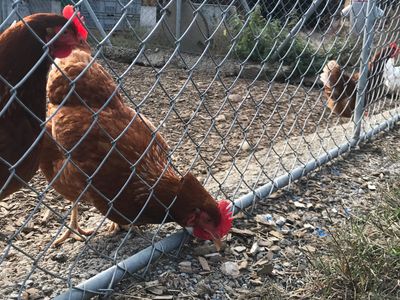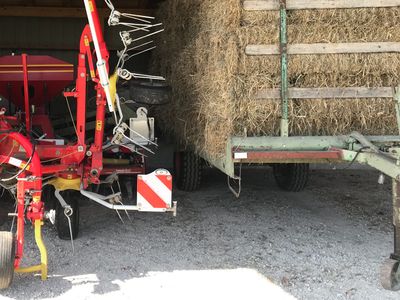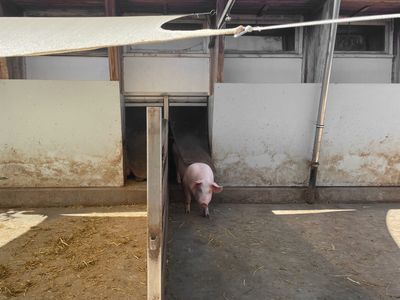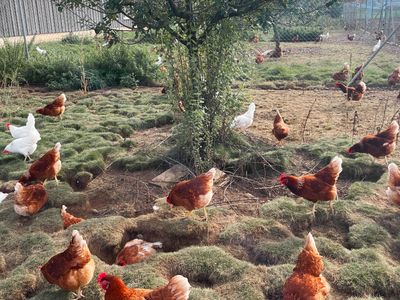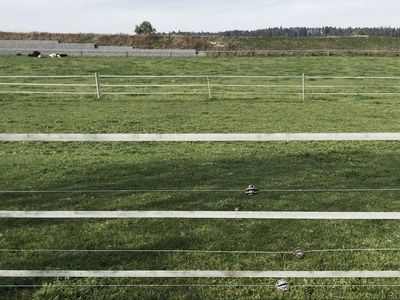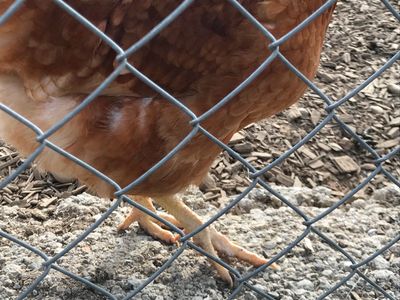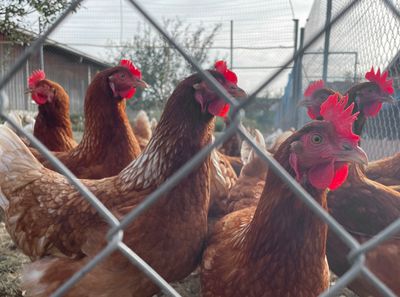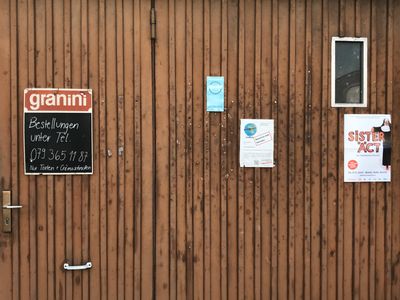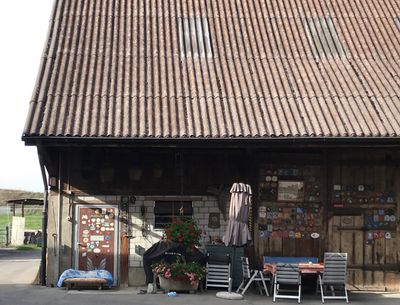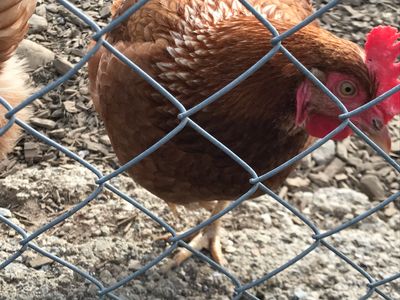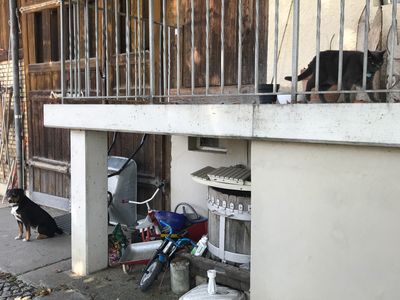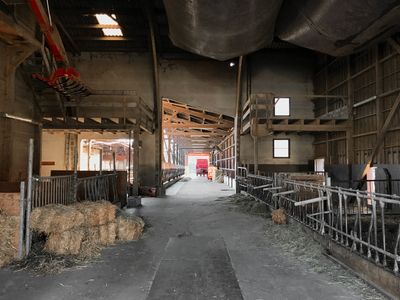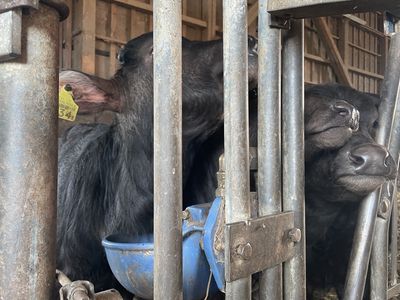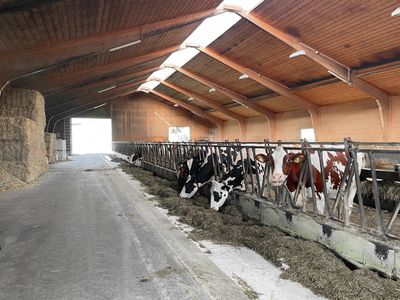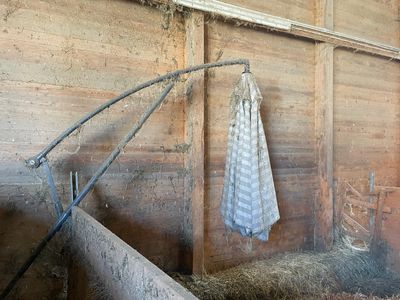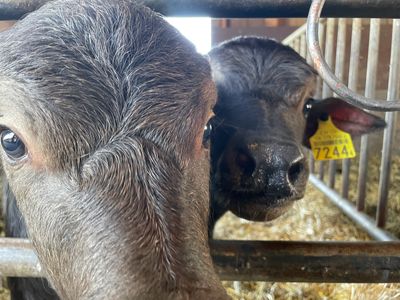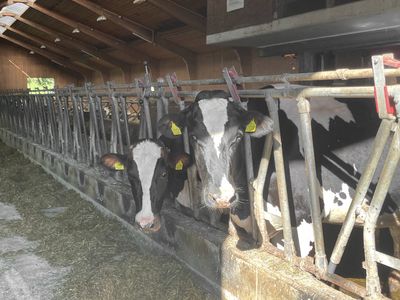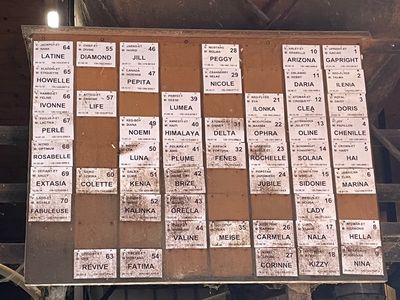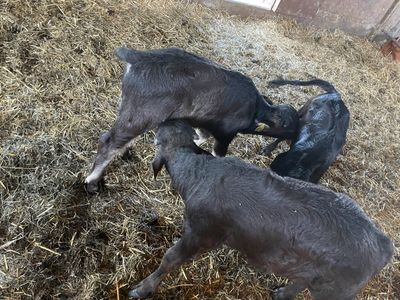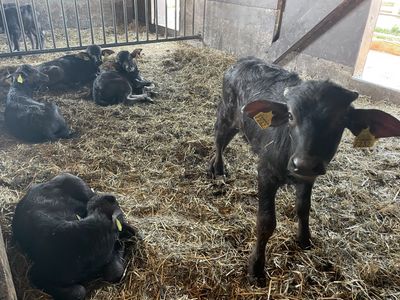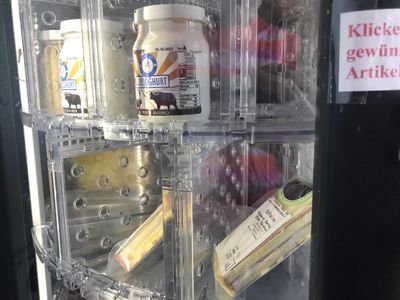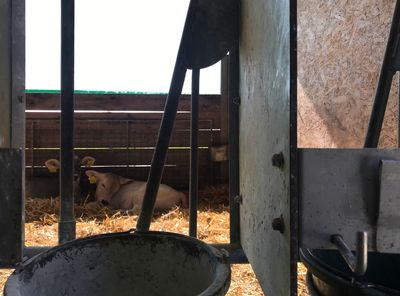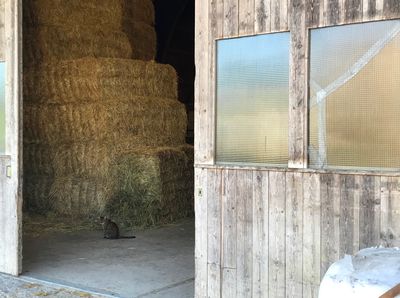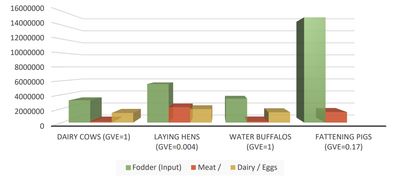AtlasAnimal FarmingSveva Steger, Mateo Mesenholl, Rosa Heer, and David Bodor
The topic of animal farming usually revolves around a human-centred agenda. Livestock is a food to feed an ever-growing population, while discussions about animal ethics, welfare and sustainability seem to be secondary. This atlas aims to show why, in the face of the climate crisis, we need to abandon the anthropocentric mindset and question and redefine our relationship with all animal products and the livestock they come from in order to develop a new understanding of the living beings we rely on so much.
The Role of Farm Animals in Züri-Nord
There are chicken, cows, goats, pigs, sheep, horses, geese and even water buffalos on the farms of Züri-Nord and they are all livestock except the horses, enjoying a status as a “hobby-animal.” Livestock is meant to feed us, in some way or another and while human animal symbiosis always existed to some degree, industrial animal farming in its current form struggles with legitimation. It is not sustainable and ethically reprehensible if not perverted.
The cultivated landscape of Switzerland in regard to animal farming is heavily embossed by cattle. Cows play an important role in the grazing of territory and in the production of manure, serving as a natural fertilizer and in contrary to pigs and chickens, they do not leave behind destroyed meadows. Cows can produce milk for up to ten years and are otherwise processed to beef. Before the third Agrarian Revolution around the 1950s cows were also used to plough fields as an alternative to horses but none of the farms in Züri-Nord still use animals as „working instruments“. Goats and sheep are very good at grazing steep landscapes with their sure footing and climbing skills. Pigs and chickens are used differently in agriculture because they can be very invasive to the landscape in industrial concentrations. Because of that they are either held in designated enclosures with little freedom to roam around or in nomadic containers, traveling from one meadow to the next.
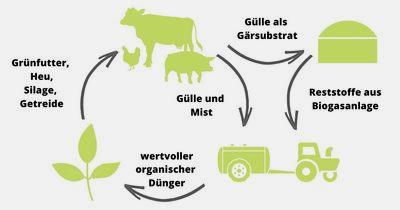
Source: verantwortungsvolle-landwirtschaft.de
The Farmer of Animals
“We live with the animals. When we go to the stables we pet them so they do not become timid. Because if we want to do something with them, it is a lot easier if they are accustomed to us.”—Conny Margler, Farmer of Margler Hof
The life of animals on a farm is dictated by the territory they inhabit, the fences and barns enclosing them and the farmers tending to them. When talking to the people managing the critters, most of them will tell you that they have intimate relations to them, especially if they spend a lot of personal time with a particular animal. Farmers structure daily activities, as well as feed and milk them to make sure animals are healthy. They organize grazing on Alps, clean the stables and bring livestock to the butcher.
These services are often used to justify the imprisonment of animals, conjuring up the idea that they would be sick and purposeless without the intervention of humans.
The Margler farm for example uses a feeding machine that can detect viruses in calves before they can spread to the others, protecting them from sickness and underdevelopment. However, at the same time the calves are separated from their mothers and isolated in iglus for up to two weeks for the same reasons.
Older generations used to work together with animals, using cows and horses for the ploughing of fields. This arrangement was gradually replaced by machines emerging from the Industrial Revolution, forging a new relationship between human and animal. Livestock became more of a commodity and actual work was replaced by tractors and milking machines. Working steps were specialized and outsourced. Slaughter took place on the farms and is now being hidden behind slaughterhouses, creating an indifference to the killing. The processing of meat into forms like ground-beef, sausages and nuggets made it easier to sell the products to consumers without conjuring up the image of a dead animal being fed to them. According to Kurt Brunner, Master Agriculturist, animals underwent a sort of imbrutement due to mechanization. Farmers allocate their work to machines and in turn diminish their relation to the animals they farm, making it harder to handle them. For Kurt Brunner the act of milking a cow or handing it over to the butcher are very personal, intimate moments of mutual respect and appreciation.
Food Culture and the Need for Meat
The circumstances of animal farming are a direct consequence of western food culture and vice versa. Veganism and vegetarianism are responses to unethical and perverse livestock husbandry and increased moral awareness. The meat consumption in Switzerland remains steady though, despite increasing political and social debates around it.
In 2022 we consumed roughly 51 kilograms of meat per person resulting in a total of 452 241 tons. Thats the equivalent of around 700 000 dead cows or 70 million dead chicken (Estimates according to GVE factors for recalculations, Kanton Zürich, Baudirektion)
Even though collective awareness and necessity for sustainable and ethical food production are rising, the industry and a society of instant gratification are still oriented towards fast, economic, mass production. Big food companies like Migros, Coop and Aldi dictate what food is and the ability to buy fair, local products directly from their producers is a luxury only few can afford or are willing to put in the effort for. Riedenholzhof for example tried to sell their water buffalo meat in the supermarket, but it was not economically sustainable, because conventional meat options are so dominant and overwhelming.
Meat as a source of protein is so engraved in western culture that many cannot imagine a life without it, not to mention all the dairy products, especially in Switzerland. Raclette or Fondue without cheese? Barbecue without sausage or steak? The way we eat and consume sets the bar for the demand companies try to supply and these companies in turn set the bar for what and how farmers and their animals produce. This is not to say that we must totally abstain from all animal products, but that if we insist on eating meat, cheese etc. we must drastically change the frequency, the way they are generated and the way we consume them.
From an energetically sustainable viewpoint, our diets would have to be detached from albumin proteins like eggs, salmon, curd etc. and focus more on carbohydrates like oats. Pork and chicken as meat have little sustainability in industrial agriculture because these animals eat the same food we do, chickens having the benefit of producing eggs during their lifecycle. In this respect, cattle is better justified. Cows produce manure and milk, eat hay, and graze territory before they end up as beef on our plates, playing a substantial role in this cycle, even though cattle is the major emitter of various greenhouse gases.
But the highest credo in our consumerism seems to be the freedom of choice. If you want to eat burgers at McDonalds every day you have the right to do so, even if it might give you diabetes or other health issues, which in the long run burden our healthcare system, not to mention that living beings are being slaughtered for your right of choice. If we held ourselves to the same dietary standards as we do our livestock, we would all be a lot healthier and might have to spend less on health insurance premiums. Additionally, meat in general has a terrible CO2 balance and is full of antibiotics that end up contaminating water reserves.
“Instead of salmon, cheese and butter, there needs to be oats again for breakfast.”—Kurt Brunner, master farmer and environmental scientist
Anthropocentrism: An Arrogant Paradigm

Many are willing to argue that the consumption of meat is the natural order of humans, the primal way of life. Survival of the fittest, according to Darwin, and we as people are the fittest species of them all, destined to rule the world. At least that is the mindset that most people subconsciously adapt. And why should they think otherwise?
Anthropocentrism is premise for the mass-consumption of animal products and thus for how we look at animals in general. They serve the purpose of supplying us with food and other products we believe to need. In the name of human superiority we breed, imprison and slaughter for profit, while calling it humane, as long as animal protection standards are met.
Human beings as the highest cultural form of life is a paradigm that is not necessarily wrong, however it is very dangerous. The idea of us being the center of the universe is what caused us to abuse our environment in the first place and unless we learn to see ourselves on par with the rest of the planet, we are doomed to be remembered as a virus who mercilessly exploited its host.
Farm Animals of the Future and Their Human Co-Workers

Animal farming at its core, without the consumer or corporations to dictate mandates and requirements, is a relationship between animal, farmer and the territory they inhabit. The future of animal farming is the future of people and animals coexisting in harmony as equals. This entails a complete breakdown of industrial meat and dairy production and even more importantly, a breakdown of our mentality regarding animals and food culture. Animals are not commodities and resources for us to exploit. They do not exist for our amusement and are not responsible to feed an overpopulated planet.
Arable land needs to be used exclusively for the cultivation of human food with exceptions being the improvement of soil fertility and the increase of biodiversity. Pork needs to be relinquished as a meat source. Pigs can also easily be released back into the wild as they are very resilient. Chicken farming needs to be reduced as much as possible. Both are to be fed according to the Feed-no-Food Principle; side products and waste. Cows, sheep, goats and pigs can also be inserted strategically into territories to help with landscaping and field maintenance, reclaiming their role as co-workers.
Ideally meat consumption will cease to exist entirely. A complete plant-based diet would support four billion more people with current yields than the current orientation towards animal products.
The animal farmer of the future will be an impartial mediator between animal and human with the common goal of securing and cultivating a hospitable, natural and divers environment for all living beings.

We would like to thank everyone who took the time to talk to us, especially Conny Margler and Kurt Brunner, who were so kind to share their expertise with us.

